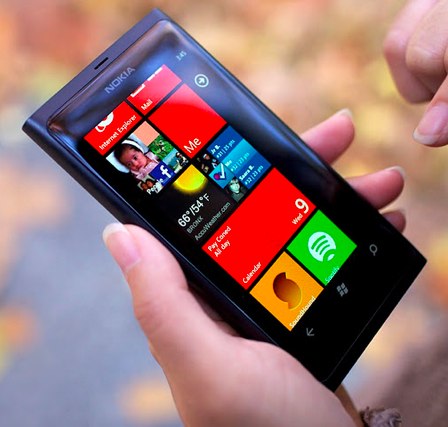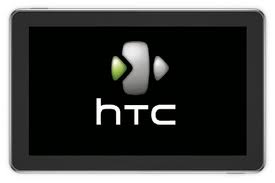
The Daily Show on MBAs Taking an Ethics Oath
Here is a lighthearted take on a serious issue.
Categories: Strategy Implementation - 782 | Topics | Psychology |

New Transparency at Apple under the leadership of Cook?
Notoriously secretive Apple published a list all its suppliers. Is this a sign that Tim Cook wants to break with Steve Jobs policy of keeping as much as possible secret and bring more openness and transparency to Apple? Or is the company simply responding to a new law in California and this disclosure would have happened under Jobs as well?
Read full story by Reuters.
Categories: Strategy Implementation - 782 | Case Studies | Apple | Topics | Leadership Style |

Critics rave about new Windows phone software: Does a new design philosophy take hold at Microsoft?
I was quite puzzled why Nokia would throw out its own smartphone operating system and replace it with Windows since the latter seemed to be quite a dud compared to Apple’s iOS or Android. But today I learned just how good critics think the new Windows operating system is. The NY Times provides an interesting look at how Microsoft finally managed to get a technology out of its company hall that has critics raving.
The tale of how Microsoft created Windows Phone starts with the introduction of the iPhone, in 2007. To Joe Belfiore, now 43, an engineer who oversees software design for Windows Phone, that was the spark.“Apple created a sea change in the industry in terms of the kinds of things they did that were unique and highly appealing to consumers,” Mr. Belfiore said in an interview at Microsoft’s campus here. “We wanted to respond with something that would be competitive, but not the same.”
Read the full NY Times article.
Categories: Strategic Management 4 | Strategy Implementation - 782 | Case Studies | Apple | Microsoft | Topics | Capabilities |

Insider Talk about Reasons for Failure of HP Tablet running WebOS
An article in the NYTimes takes us behind the scenes of HP’s abrupt exit from the tablet market. Palm did not have the organizational capabilities to introduce a tablet into the market. The article suggests that the WebOS operating was fundamentally to flowed to compete successfully with the iPad even when the full organizational resources of HP were thrown behind it. Read article in the NYTimes.
Categories: Strategy Implementation - 782 | Case Studies | HP | Topics | Capabilities |

Stanford is beaten in NYC project
Stanford had no experience with building a campus in NYC and bowed out the competition to build new campus in NYC because the strength of the Cornell, which had already a lot of experience building in the city. Read full story in NY Times

Categories: Strategy Implementation - 782 | Topics | Capabilities |

An overview of Jack Welsh’s career (43 min)
Categories: Strategy Implementation - 782 | Case Studies | GE | Topics | Leadership Style |

Why do a few companies succeed for a long time and most don’t
The economist published two useful articles on corporate longevity. The first article examines why IBM, despite a few crisis, has been able to reinvent itself and celebrate it 100s anniversary in 2011. It contrasts the firm to DELL, Microsoft and others. IBM @ 100
The second uses the context of the failure of outside CEOs HP to questions whether outsiders know enough to run a complex high-tech company. The Trouble with Outside CEO Appointments.
Categories: Strategic Management 3 | Topics | Corporate Growth | Strategy Implementation - 782 | Topics | Institutionalizing Change |

Fundamental Objective for Founder of HTC is making unique products rather than margin
Chou [CEO of HTC] said he cares more about making unique products than making good profit margins. He listens and acts quickly. Often, when Beats co-founder and music producer Jimmy Iovine calls with an idea, Chou will have sent off an e-mail about it before the conversation is over, Iovine said. Chou said he tests the music himself. A $300 million controlling stake in Beats Electronics LLC, the headphones maker backed by rapper Dr. Dre, was part of a strategy to lure music enthusiasts with a marketing plan that included bringing singer Lady Gaga to an Oct. 6 audio party in London to release the HTC Sensation XL, its first handset featuring Beats audio technology and headphones.
Source: Bloomberg BusinessWeek
Categories: Strategic Management 1 | Topics | Fundamental Objective | Strategy Implementation - 782 | Topics | Fundamental Objective |

Why the CEO of HP was fired after only 10 months on the job
The proximate cause was the HP Stock price.

For more distant causes click on “more”.
Categories: Strategic Management 4 | Strategy Implementation - 782 | Topics | Leadership Style |

Kodak Tries for 30 Year to Turn its Business Around
The WSJ reports:
ROCHESTER, N.Y—After three decades of serial reorganizations, Eastman Kodak Co. is struggling to stay in the picture.
The 131-year-old company lost much of its film business to foreign competitors, then mishandled the transition to digital cameras. Now it is quickly burning through its cash as it remakes itself into a company that sells printers and ink.
On July 26, Kodak reported its fifth consecutive quarter of losses. The company’s junk-rated debt coming due in two years has moved below 80 cents on the dollar, signaling the market sees a risk of default. The company’s already battered stock has taken an especially tough pounding in recent days, falling 10% Wednesday to $1.77. Prior to this week, Kodak hadn’t closed below $2 since the 1950s, according to the Center for Research in Security Prices at the University of Chicago.
Update January 5, 2012. Kodak files for bankruptcy
Economist.com: Update January 14, 2012. Kodak is at death’s door; Fujifilm, its old rival, is thriving. Why?
Feb 1, 2012: Wharton Professors comment on the demise of Kodak. What’s Wrong with This Picture: Kodak’s 30-year Slide into Bankruptcy
May 2, 2012: John Kotter traces to failure of Kodak to complacency that set in even before the digital revolution. Read Barriers to Change: The Real Reason Behind the Kodak Downfall
Categories: Strategic Management 4 | Topics | Turnarounds | New Business Model | Strategy Implementation - 782 | Case Studies | Topics | Capabilities |

Information Overload in Water Systems
PM: What does not get measured does not get managed. This is a principle I subscribe to. But you need a second principle to make this work: Avoid information overload. Here is an example of how a company figure out how to analyze large amounts of data to identify useful information that can be acted upon.
Pipe Dreams: To plug leaks from the water supply, you first have to find them.
An effective way of detecting leaks [in municipal water systems], both accidental and deliberate, would therefore be welcome.
TaKaDu, a firm based near Tel Aviv, thinks it has one. The problem, in the view of its founder, Amir Peleg, is not a lack of data per se, but a lack of analysis. If anything, water companies—at least, those in the rich world—have too much information. A typical firm’s network may have hundreds, or even thousands, of sensors. The actual difficulty faced by water companies, Dr Peleg believes, is interpreting the signals those sensors are sending. It is impossible for people to handle all the incoming signals, and surprisingly hard for a computer, too.
Categories: Strategic Management 2 | Topics | Systems | Strategy Implementation - 782 | Topics | Information Design |

Bob Lutz: Life Lessons From the Car Guy
This fascinating excerpt from Bob Lutz’s book highlights a couple of key issues: one needs to have deep knowledge about an industry to make the right decisions, one needs to select the right leadership style for the organizational context, and finally if one wants to have a long last impact, one needs to institutionalize the change. The reason why Lutz failed to institutionalize is product develop process at Chrysler but believes that it will stick may have nothing to do with him: GM went through bankruptcy and the old ways may have been forced to retreat.
A few days later Lutz was interviewed about the book and the article by the WSJ. Click on
Categories: Strategic Management 4 | Topics | Decision Making | Turnarounds | Strategy Implementation - 782 | Topics | Institutionalizing Change | Leadership Style |

Lehman Brothers’ did not Walk to Talk of its Mission Statement
BRW reports: “Lehman Brothers’ mission statement nodded in all the right directions. It told employees and investors that
We are one firm, defined by our unwavering commitment to our clients, our shareholders, and each other. Our mission is to build unrivalled partnerships with, and value for, our clients, through knowledge, creativity, and dedication of our people, leading to superior returns to our shareholders.
However, the investment bank did exactly the opposite, gorging on low-quality mortgages and nearly felling the global financial system. Rather than ‘set and forget’, [mission statements] should be part of a conversation between staff and management.”
(BRW August 26-October 6, 2010, p. 78)
Categories: Strategic Management 1 | Topics | Fundamental Objective | Communication | Strategy Implementation - 782 | Topics | Fundamental Objective |

Richard Branson’s Fundamental Objective
The Financial Times posed twenty questions to Richard Branson. Here are the two important ones that touch upon the idea of a fundamental objective.
How important is money?
My priority is learning and trying to improve the world – not being rich.How do you want to be remembered?
That I have made a difference.
Read full interview.
Categories: Strategic Management 1 | Topics | Fundamental Objective | Strategy Implementation - 782 | Topics | Fundamental Objective |
Topics
